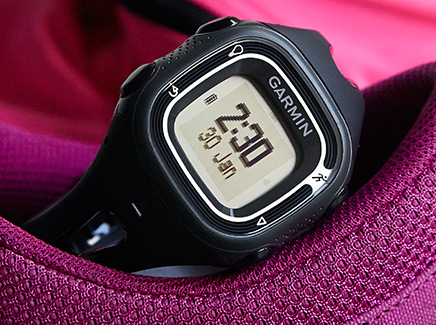Tom's Guide Verdict
The $99 Garmin Forerunner 10 is a solid GPS watch that maps routes; tracks distance, pace and calories; and keeps your data safe — all in a waterproof design.
Pros
- +
Accurate GPS
- +
Waterproof design
- +
Inexpensive
Cons
- -
No Bluetooth
Why you can trust Tom's Guide
If you're looking for an inexpensive way to map your runs, look no further than the Garmin Forerunner 10. This $99 waterproof GPS watch accurately tracks distance, pace, speed and calories — all while mapping and saving your running routes. The Forerunner 10 lacks such amenities as Bluetooth for wireless syncing, but it will serve your outdoor running needs without breaking the bank.
Design
The Garmin Forerunner 10 looks nearly identical to the $139 Garmin Forerunner 15, which adds daily activity-tracking features and Bluetooth (but only for Garmin accessories). It has the same squarish body, a traditional wristband and four tactile buttons (one on each corner). It also comes in a variety of demure and bright colors, including orange, lime green, pink and violet.
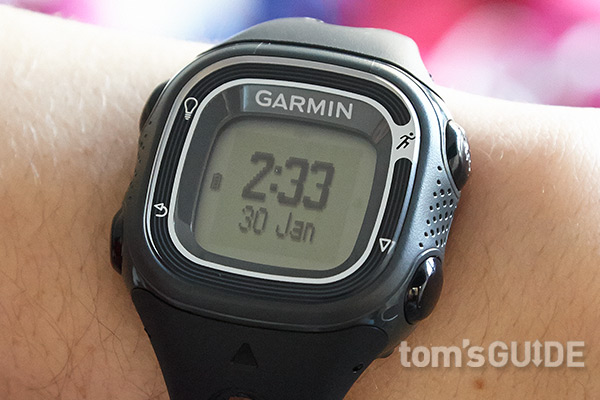
The buttons serve the same functions as the ones on the Forerunner 15: The top-right button starts a run and selects options on the screen, the bottom-right button scrolls through options, the top-left button controls the display's backlight and the bottom-left one is used to go back a screen.
Garmin kept the display's resolution at 55 x 32 pixels on the Forerunner 10, giving it just enough room to continuously show you the time and date. Since it doesn't act as a passive activity monitor, you won't see a step count on the home screen.
MORE: Best Fitness Trackers
The similarities between the two devices continue: The Forerunner 10 has the same 1.5-ounce weight as the Forerunner 15, making it slightly lighter than the TomTom Runner GPS watch (1.75 ounces), and all three devices are water-resistant up to 165 feet (5 ATM).
As with the Forerunner 15, I appreciated the basic watch strap on the Forerunner 10. It was simple to secure around my wrist, and it never felt uncomfortable while I was working out.
Setup
You connect the Garmin Forerunner 10 to your computer (PC or Mac) using its charging base and USB cord to give it some juice before your first run. While the device charges, you need to download Garmin Express to set up the Forerunner 10. After that, you open the program, and the device will automatically pair with it. Then, you'll be asked to create an account with Garmin or sign in. After that, the device will connect with your account and sync. In the future, you'll use Garmin Express to install any software or firmware updates for the Forerunner 10.
Interface
The home screen of the Garmin Forerunner 10 is a basic, always-on watch face that also shows the date and battery life. Using the bottom-right button to scroll down, you'll see the three other main pages: Run Options, History and Settings.

You can turn running features on or off in the Run Options page, letting you customize the information you want the Forerunner 10 to collect and present to you. Auto Pause is an important one to activate, as it lets the device sense and take note when you've slowed down from a jog to a walk.
I particularly liked the Run/Walk feature for newbie trainers like me; when that option is turned on, the device will beep to let you know it's time to switch from running to walking, and vice versa.
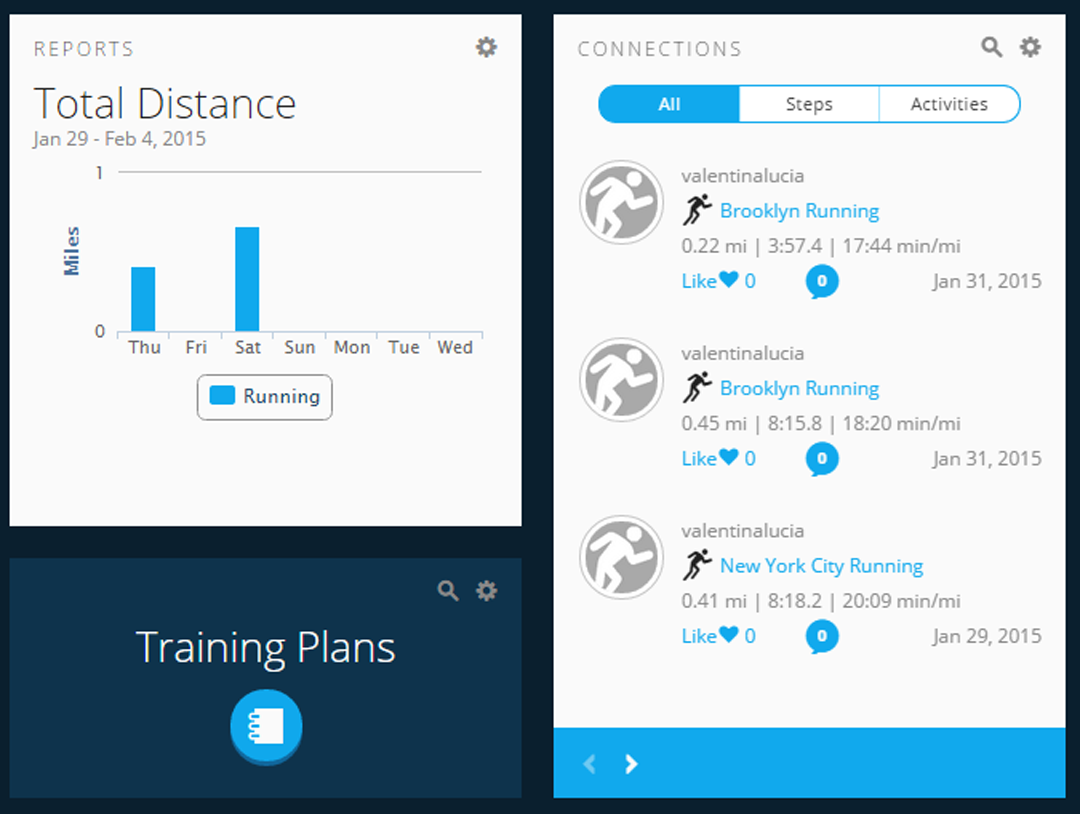
The History page lets you look back at your stored runs, breaking them down by day. Similar to the Forerunner 15, the Forerunner 10 can store seven activities or seven days' worth of data before you have to sync it to Garmin Connect. Since the Forerunner 10 cannot sync to the Garmin Connect app via Bluetooth, the History page will come in handy when you want to review your most recent training sessions on the go.
The final Settings page is where you control the device's features. Here, you can do things like set alarms and toggle the buttons' press tones.
GPS
With its embedded GPS, the Garmin Forerunner 10 is built for outdoor running and jogging. I found that it accurately mapped my workouts, even if it sometimes took a while to grab hold of a location signal.
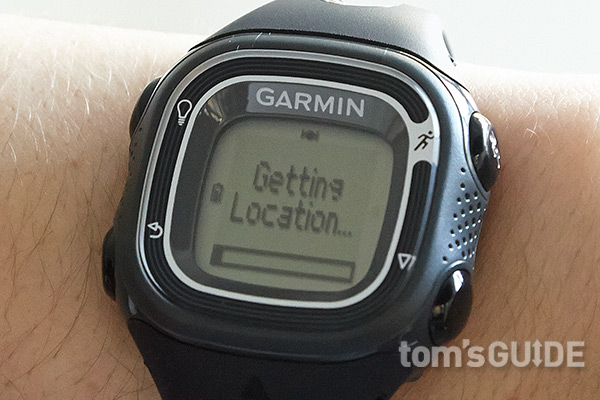
When you begin a run by pressing the top-right button, the first thing the Forerunner 10 does is look for you using its GPS. In Brooklyn's Park Slope neighborhood, the Forerunner found my location almost instantly.

However, tall buildings are a big obstacle for this device — a common issue with GPS watches. In Manhattan's Flatiron District, the Forerunner 10's GPS couldn't pick up a signal at all and just stopped trying after 4 minutes. However, in the open air of Union Square, the device found me within 30 seconds.
Performance
Overall, the Garmin Forerunner 10 tracked and mapped my runs accurately, with little effort on my part. It's a no-frills device that only requires you to start and stop your activity — it takes care of the rest for you.
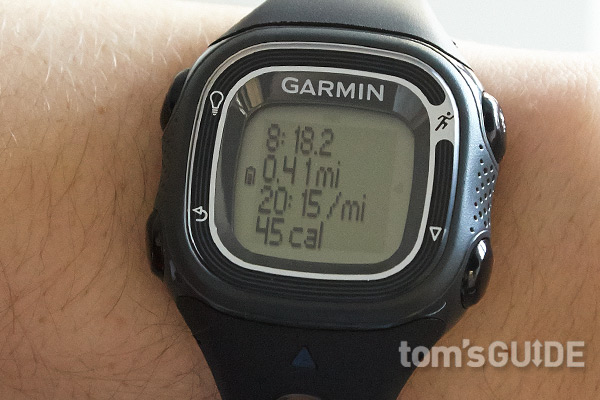
During a run, the device shows you the time elapsed and the distance traveled, but you can customize it to also show pace and distance. Every mile you run, the Forerunner 10 beeps and flashes on the screen to alert you and give you a small bit of audible motivation.
MORE: 15 Best Fitness Apps
The main differences between the Forerunner 10 and the Forerunner 15 are that the Forerunner 10 lacks daily activity monitoring and you cannot pair any accessories with it. Therefore, if you're looking to track heart rate or indoor running with Bluetooth-paired devices, you'll be out of luck with the Forerunner 10.
Garmin Connect
Garmin Connect is the hub where all your running data goes to live after you've synced the Forerunner 10 to your account via your PC. If you have the Garmin Connect Android or iOS app, your data will be updated in the app after you've synced.
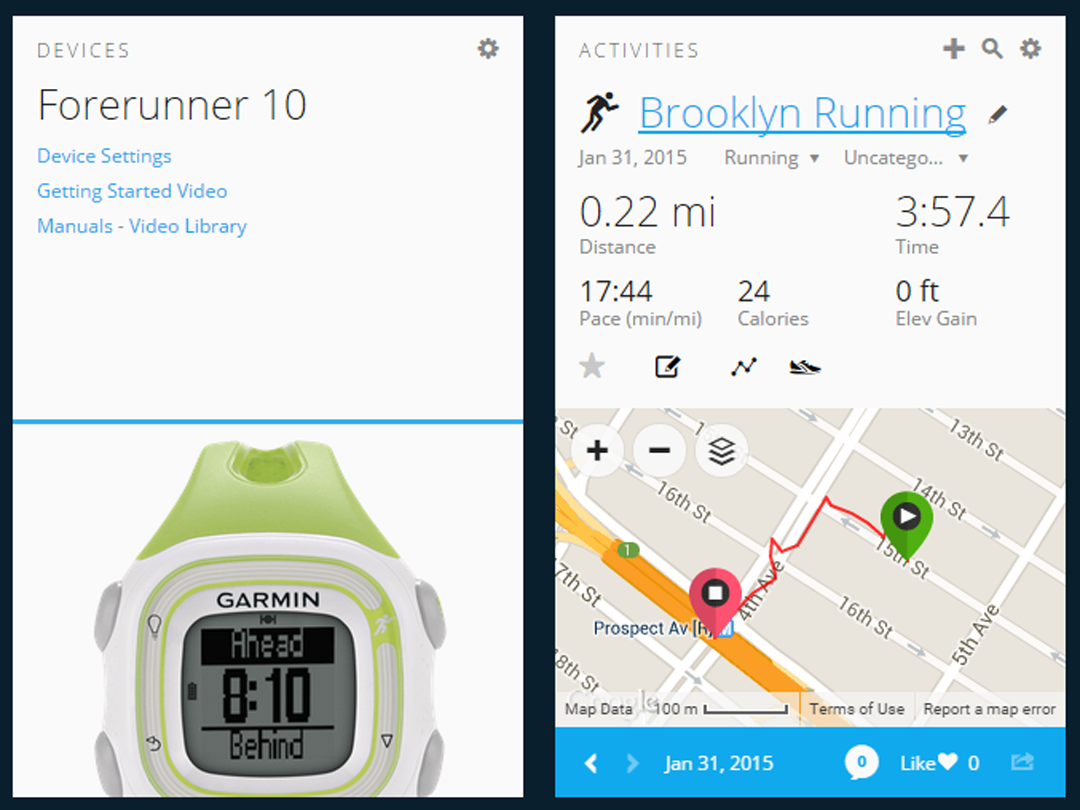
The Garmin Connect dashboard on your PC breaks down data into cardlike windows, with dedicated spaces for running route maps, reports, challenges and badges. Garmin Connect is essential for those who want to track training sessions over long periods of time.

I found myself using the dashboard on my PC rather than in the app when I wanted to go over all of my previous week's activity because the PC interface is less cramped. You can also drag and drop data cards around the dashboard to put the most important information you want to see front and center.
Battery Life
The Garmin Forerunner 10 can last five weeks in watch mode and up to 5 hours with the GPS running in training mode. Both the Forerunner 15 and the TomTom Runner GPS watch promise 2 to 3 hours more, clocking in at 7 to 8 hours of battery life while running. I wore the Forerunner 10 for five days and recorded runs on three of those days, each between 15 and 30 minutes long, and there was only a small dent in the battery indicator.
Bottom Line
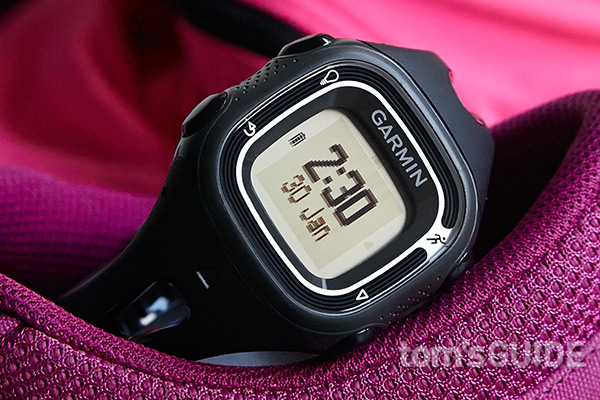
Garmin stuck to its roots with the Forerunner 10, creating a solid, value-priced GPS watch that you can easily strap on and forget about while training. Anyone who is serious about outdoor running will love how easy it is to set and forget the Forerunner 10. In addition, Garmin Connect makes it a cinch to see where you ran.
While Bluetooth is not a standard feature in budget GPS watches, I still wish the Forerunner 10 (and the Forerunner 15, for that matter) had wireless syncing abilities, as it would make the Garmin Connect app much more useful. But if you're looking for a running companion to track all of the essential data points from your sessions, the Forerunner 10 is a great, inexpensive option.
Valentina is Commerce Editor at Engadget and has covered consumer electronics for a number of publications including Tom's Guide, Wired, Laptop Mag and Ars Technica, with a particular focus on wearables, PCs and other mobile tech.
